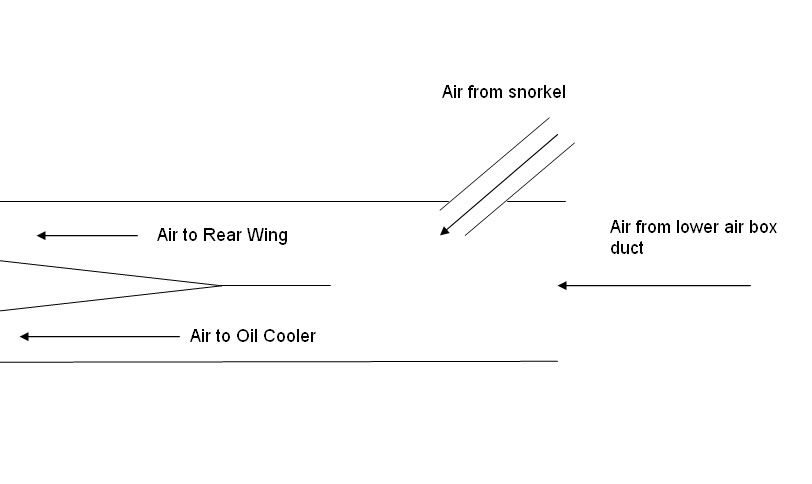horse wrote:
No, sorry, it's my fault, I'm just assuming it's like a switch, but maybe not. I take it all back, sorry guys. [-X
OK, this has really got me thinking now....
IF the fluidic valve is behaving as a bi-stable (i.e. once switched by a 'signal' of air from one channel, it stays put until a signal appears on the other port) then that would be one thing... BUT on the other hand, if a constant stream of air is required on one or other port in order to prevent the "valve" from averaging it's output between the two outlet ports, perhaps we are looking at something quite different....
We believe that the snorkel has a corresponding identical panel on the other side, so how about this for a wacky idea:
What if they intend to run two snorkels, one on the left, one on the right, whereby completely depressing the accellerator pedal pinches a pipe which 'has' to be routed under it, thus sending the air from the airbox inlet to meet the hole in the floor which feeds the second deck of the DDD thus reducing D/F and presumably drag. But at the end of the long straight, when the driver removes pressure from the accellerator, the airbox air is sent directly to a hidden vent out the back of the car. When the brake pedal is completely depressed, the left hand pipe is pinched, sending signal air to the "fludic valve" which in turn sends the airbox air to the sharkfin, stalling the wing creating a switchable air-brake?
I know this is off the wall, but if you're going for an extreme idea, you may as well make it pay both for when you're flooring it and for when you need to stop a heavy car quick.
I wonder also if it would be legal for a mechanic to slip a cover over one or other snorkel on the final pitstop as the fuel load has now diminished sufficiently to no longer need the air-brake.
Guys, please tell me if I am filling valuable column inches here with too much nonsense!
The answer to the ultimate question, of life, the Universe and ... Everything?





